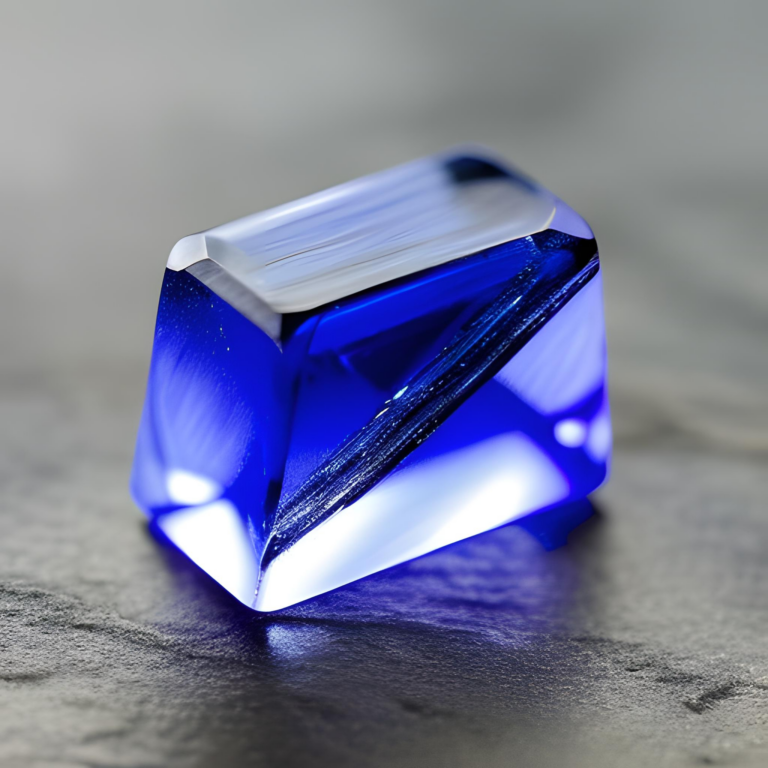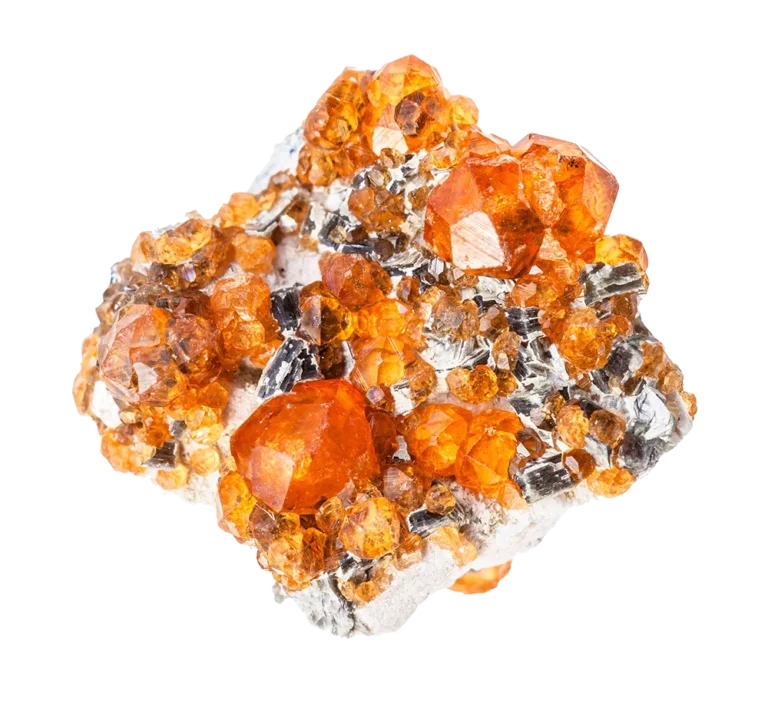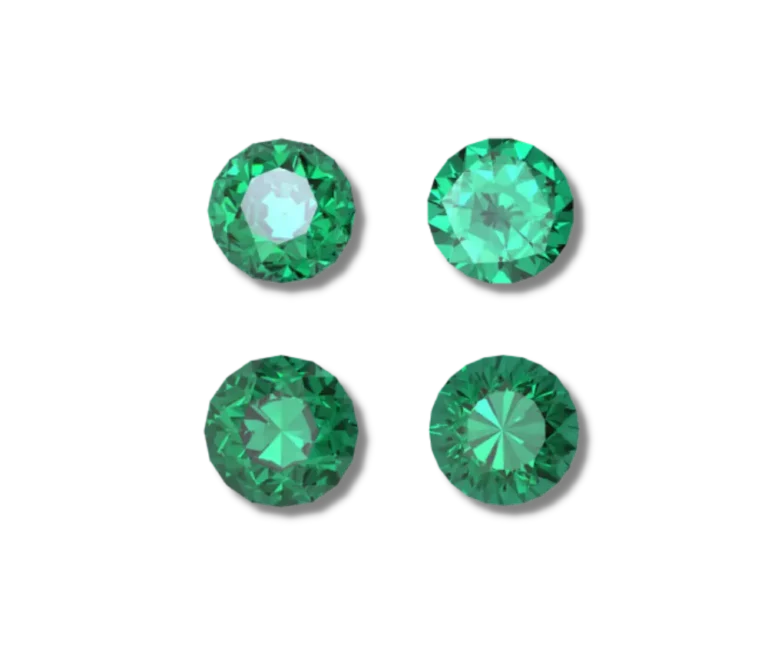Diopside Stone: Properties, Benefits & Meanings
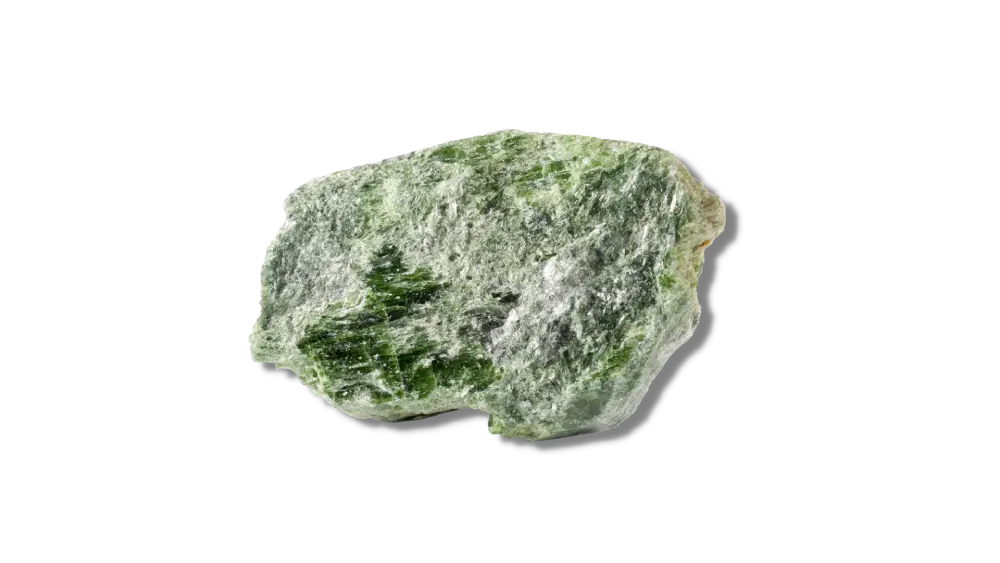
Diopside Stone Overview
Diopside stone is a gemstone and mineral formed in volcanoes and has been around for millions of years. The minerals that form Diopside are olivine, pyroxene, and plagioclase feldspar. Additionally, it also contains chromium which makes up about 20% of the composition of this mineral.
Diopside stone is a greenish-gray mineral found in igneous, metamorphic, and sedimentary rocks. It’s often used as an ornamental stone because of its rich color.
What Is A Diopside Stone?
Diopside is a pyroxene mineral with the chemical composition CaMgSi2O6. It has a monoclinic crystal system. It forms in the Earth’s mantle and crust due to high pressure and sometimes erupts onto land surfaces.
Depending on its impurities, the color ranges from green to yellow to brown or black.
It was first described in 1791 but proved difficult for later chemists to classify until Berzelius established an empirical formula for it in 1815.
Diopside stone is an interesting stone that is often mistaken for other stones. The most common mistake it gets is being confused with emerald. This happens because of the color, which is light green.
Meaning and symbolism
Diopside stone gets its name from the Greek word “diopsis”, which means “two appearances” —a reference to its double refraction (double images) when it’s held up to a light.
It is a gemstone that represents love and compassion. It also signifies forgiveness, harmony, and balance.
The stone is associated with the heart chakra, which governs our emotions and experiences of love.
Diopside Appearance
Diopside, a transparent to translucent stone, has a vitreous luster and is found in colors ranging from green, dark green, blue, and greenish-blue to brownish-red.
It is often confused with epidote, which its yellowish tint can distinguish. However, Diopside can be found in different colors of green or blue depending on the amount of chromium present.
When you look at a Diopside stone, you will notice that there are small black specks on it. These specks are called inclusions, and they are small pieces of other minerals that got mixed up in the formation of this gemstone.
Varieties of Diopside
There are three main varieties of Diopside Stone.
Chrome Diopside
This variety of Diopside was discovered in Russia in 1763. The name “chrome diopside” comes from the fact that it contains chromium, which gives it its distinct green color.
The stone’s hardness ranges from 6-7 on the Mohs scale of hardness, making it very durable but not too hard to work with. It’s also known as chrome diaspore.
Chrome diopside is a beautiful stone that’s often used as an alternative to the emerald. It’s also known as chrome green tourmaline.
Chrome diopside stone is popular because it has a high refractive index—meaning that light bounces off the stone more than other gems. This makes it ideal for jewelry to catch the light at every angle.
The best way to use this stone is by wearing jewelry made out of it. You can also use it as an altar stone or in your garden as an ornamental plant.
Chrome diopside is often used in gemstone collections because it looks great when paired with other stones such as amethyst, citrine, and jadeite.
This gem is also known for bringing good luck. It is also thought to help its owner heal and can be used for meditation.
Black Star Diopside
Star diopside is a beautiful stone that has an asterism effect. The name “star” refers to the four or six-pointed star shape that forms on this stone when polished.
The asterism of the stone is caused by tiny needle-shaped crystals within the stone that reflects light differently than the surrounding material. This creates an optical phenomenon called adularescence; when viewed from different angles, this effect creates the illusion of light coming from within the stone—like stars shining through the night sky!
Moreover, the presence of magnetite inclusions causes the star in these stones. Star diopside was first identified in Finland during the 19th century. It is a beautiful stone that is often mistaken for star sapphire.
It’s a rare gemstone, especially regarding the gem clarity and color. Star diopside has a breathtaking black and deep brownish-green color, and its luster is bright and clean. You can find this gem in many sizes, from small to large.
It’s also called “star of India,” after its country of origin, It’s often polished into cabochons and set in jewelry, but it can also be used in cabochon jewelry.
Violane
Violane is the rarest variety of Diopside. The name violane is derived from the Latin word viola, which means violet. This gemstone has a beautiful violet color that ranges from deep purple to light lavender.
The color of violane is caused by trace amounts of manganese and iron. It’s also known as violet spinel, violet diopside, and purple Diopside.
Its pure form has a hardness of 5-6 on the Mohs scale, making it reasonably soft. When polished, it can be cut into cabochons or faceted to give a bright violet color.
Violane can be used as an alternative to smoky quartz for those who enjoy wearing jewelry but don’t want something too dark on their hands or wrists.
Physical Properties
Diopside crystals have a high birefringence. Birefringence refers to the difference in refractive index between different directions in a crystal.
In this stone, cleavage occurs in two directions at right angles to each other (100). It is very easy to distinguish this mineral from other minerals with similar habits due to its distinctive cleavage patterns. Cleavage refers to the tendency of a mineral to break along certain planes in a pattern that is determined by its internal structure.
| Mineral Group | Pyroxene |
| Formula | CaMgSi₂O₆ |
| Chemical name | monoclinic pyroxene mineral |
| Color | Green, Black |
| Hardness (Mohs scale) | 5.5-6.5 |
| Refractive Index | 1.665 – 1.73 |
| Fracture | Conchoidal to Uneven |
| Luster | Vitreous to dull |
| Specific Gravity | 3.278 |
| Transparency | Transparent to Opaque |
Where Can You Find Diopside?
Diopside stone can be found in many different places worldwide:
However, the best quality gems come from Russia’s Ural Mountains region.
Diopside is a gemstone that is found in combination with other jewels. It is often found with emerald, sapphire, ruby, aquamarine, and topaz.
It is found in volcanic rocks and metamorphic rocks. It’s an igneous mineral made up of calcium-magnesium silicate hydroxide with small amounts of chromium, nickel, iron, and manganese.

How Is It Formed?
Diopside stones form deep under the earth’s crust at high temperatures and pressures in granitic rocks such as granite.
The formation of Diopside stone is a process that occurs when limestone and dolomite are subjected to metamorphism. The metamorphism causes the rocks to become heated and pressurized, which transforms them into different minerals.
Limestone and dolomite are types of sedimentary rock. They form from the accumulation of fossils and shells over millions of years, which eventually harden into rock. The heat and pressure caused by metamorphism cause these rocks to transform into Diopside.
Diopside Occurrence
Diopside stone is an essential mineral in the Earth’s mantle. It occurs in ultramafic (kimberlite and peridotite) igneous rocks, which are composed of magnesium-rich minerals. Most Diopside is mined from these rocks, but some have been discovered in metamorphosed limestone deposits.
It is also found in meteorites.
History of Diopside
The first documented use of Diopside stone in jewelry dates back to ancient Egypt, where it was used as amulets and talismans. The Romans later adopted its use as well, using it as a talisman against evil spirits.
In Ancient Rome, Diopside was worn by soldiers on their shields as they went into battle because they believed it would protect them from harm.
Diopside stone was also thought to help women conceive children, so many women who wanted children wore diopside jewelry throughout history.
How to tell if it is real
As a general rule, if you’re buying gemstones on eBay, Amazon, or any other online marketplace and the price seems too good to be true, it probably is.
The best way to know if your Diopside stone is real is to take it to a gemologist. They’ll be able to examine the stone closely and determine whether it’s fake or genuine.
However, there are a few things you can look at yourself to determine whether the stone is real or artificial. First, take note of the color. The most common type of Diopside is greenish-blue, but there are also black and brown varieties.
If your stone is not the same color as the other piece of Diopside you have handy—and if it has an artificial tint that makes it appear different than the other piece—then you may want to reconsider whether or not it’s authentic.
Check out its luster and transparency! Real Diopside stone will have a high luster and high transparency; if either one of these is lacking in your stone or shows signs of wear over time (like scratches), it might not be genuine.
You can tell if your stone is fake by performing a scratch test. Diopside is a relatively soft gemstone. Therefore it should be scratched fairly easily by a material like glass.
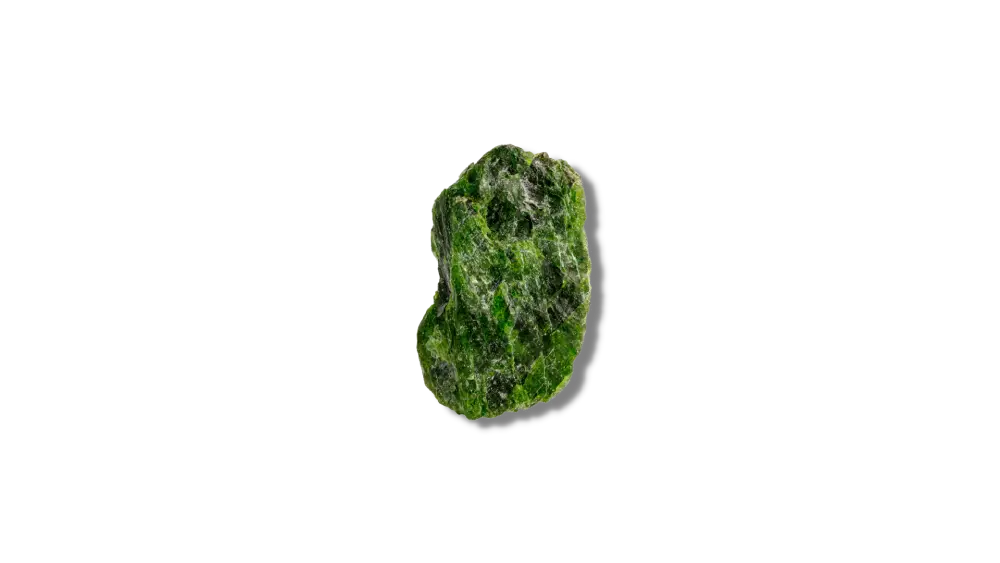
Diopside Value
The price of Diopside stone is determined by the stone’s size, quality, and cut.
Size: The most valuable Diopsides are large stones. If you’re buying loose stones, expect to pay between $50-$100 per carat for smaller pieces between 1/4″ – 3/4″, whereas more significant amounts can range anywhere from $150-$300 per carat, depending on their overall quality.
Quality: High-quality stones have a high color saturation index (SI) and are free from visible flaws. Stones that display all these features will be priced higher than those with fewer or less desirable qualities. The most valuable Diopside is those with vivid color and high transparency.
Cut: The gemstone form of Diopside is often cut into cabochons with either straight edges or rounded edges. Diopside cabochons can cost anywhere from $1 per carat to several hundred dollars per carat, depending on their quality, size, cut, and appearance.
A well-cut Diopside crystal will have facets that reflect light evenly across its surface, creating flashes of rainbow color when turned at different angles under bright lights or sunlight.
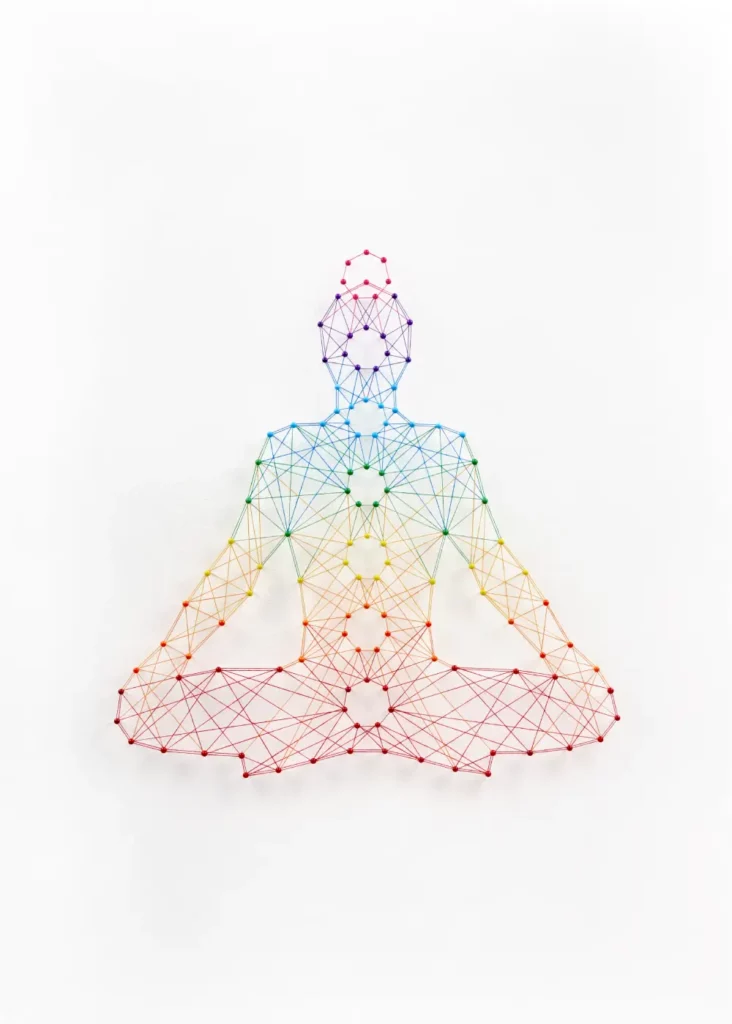
Chakra Connection
Diopside’s power will help you to connect with your intuition, creativity, and inner wisdom. In addition, this stone is a potent tool for protection against negative energy, so it can make you feel safer in situations where there may be someone else who is causing you harm.
The Chakra that Diopside stone works best with is the heart chakra (also known as the seat of love), which represents our ability to give and receive love.
The other chakras this crystal works with are the Throat Chakra (voice), Third Eye or Brow Chakra (insight), Solar Plexus or Navel Chakra (self-esteem), and Sacral or Root Chakra (sexuality).
Metaphysical Properties
It is believed that the healing properties of Diopside stone are extremely powerful. This stone is considered beneficial for anyone dealing with addiction, as it assists in the healing of any negative habits or compulsions and helps users to achieve balance.
It can also help users find their spiritual and physical center by bringing them into a state of peace and harmony.
Diopsides can be used to heal the heart chakra, which deals with love, compassion, forgiveness, joy, and gratitude. They are believed to be great stones for anyone recovering from a broken heart because they will help promote healing within this area.
However, Diopside should not be used by anyone who has recently suffered a loss due to its ability to stir strong emotions easily.
It is not just its appearance that makes Diopside different from other gemstones; its properties also make it unique. For example, it has been known to help people with their mental health by making them feel calmer and more relaxed when they wear or carry it around everywhere they go.
This stone is also believed to help heal physical ailments such as headaches, stomach aches, and joint pains due to arthritis or gouty arthritis symptoms like inflammation.
Diopside Uses
- Diopside is most commonly used as a gemstone. Diopside can be used to make jewelry, which has been used for that purpose since the Middle Ages.
- It also has industrial uses: Diopside is one of the materials used to make synthetic emeralds.
- Diopside is a fantastic stone used to make ceramics for centuries. It offers a beautiful and unique purple color, but it also has the added benefit of being incredibly durable.
- Diopside is an excellent choice for ceramicists looking to create pieces that can be used as practical and decorative objects.
- Diopside has also been used historically to treat ailments like arthritis and gout.
- It is best known for its use in making green-glazed pottery and glazes. Diopside is also commonly used in the production of porcelain glazes.
- Diopside is a mineral that can be used to make glass. The glass created from Diopside has a deep green color and is often used for decorative purposes.
- Diopside was often used to indicate the presence of diamonds in the past.
- It has recently been discovered that Diopside’s strength makes it an ideal candidate for nuclear waste immobilization. Diopside reacts with the radioactive elements in nuclear waste; it creates a substance called perovskite, which can be used as a building material. This is great because it reduces the amount of hazardous waste that needs to be stored or discarded.
- Diopside can also be used as an additive to cement and help prevent corrosion in structures made of steel or concrete.
- Diopside is commonly used as an abrasive stone because of its hardness and toughness qualities, which make it suitable for use on glass, ceramics, and metal surfaces without scratching them easily.
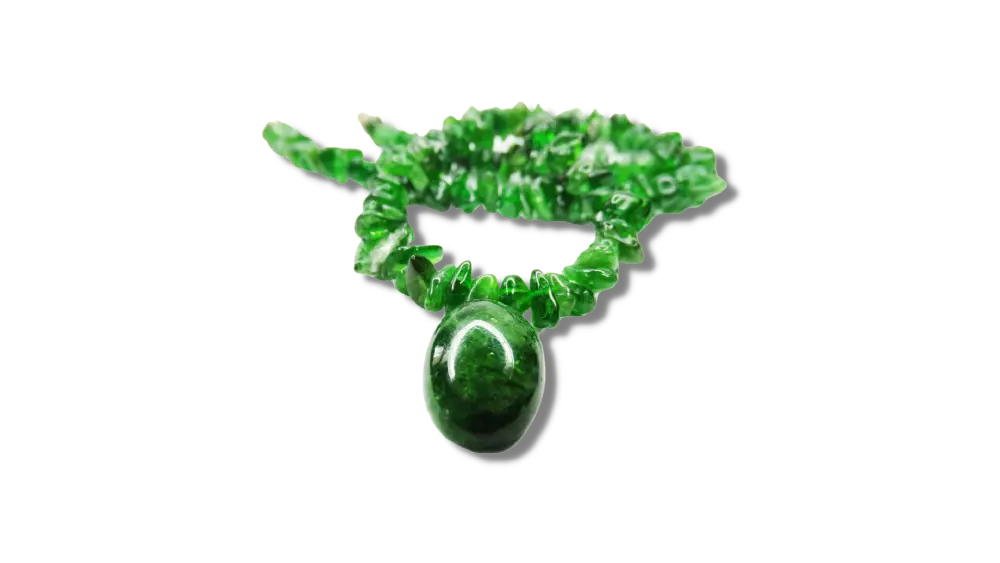
How To Take Care Of Diopside Jewelry?
Diopside is a beautiful stone, but it can get dirty really easily. Here are some tips for cleaning your diopside jewelry:
1) Use a soft cloth to wipe off any dirt or dust on the stone.
2) If there’s a lot of dirt and grime, soak the stone in warm water with a little bit of mild soap (the kind you use on your dishes) for 15 minutes. Then wash off with warm water and dry with a soft cloth.
3) If there’s still some residue left after washing, use an old toothbrush dipped in vegetable oil to scrub away any remaining marks on the stone’s surface.
FAQs
Is Diopside a precious stone?
Diopside is a type of gemstone, but not all gems are precious.
Diopside is a semi-precious stone, meaning it has value but not as much as some other precious stones. It’s also known as “the sunshine stone.”
Is Diopside rare or Common?
Chrome Diopside is generally considered a rare stone. However, it’s not as rare as other gems, like diamonds or emeralds. So if you’re looking to find Diopside in your local jewelry store, you’ll probably be able to find it—but you may have to look around for a while.
However, Star diopside is a variety of Diopside that is incredibly rare. It comes from India. It is one of the most valuable stones in the world and has been used for centuries to make jewelry and other luxury items.
Violane is the rarest variety of Diopside.
Can it be synthesized in a lab?
Yes, Diopside can be synthesized in a lab. Diopside is usually found as a natural mineral, but it can also be made in a lab by mixing aluminum oxide with sodium silicate and heating them to high temperatures.
What gemstones pair well with the diopside stone?
The Diopside stone makes a good fit for rock crystals, amethysts, and boulder opals. These gemstones work well together and harmonize to provide additional benefits.




